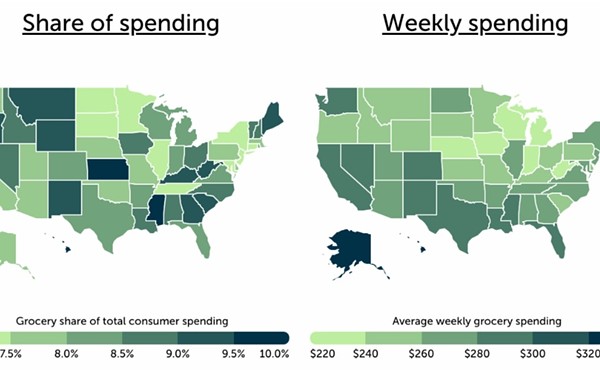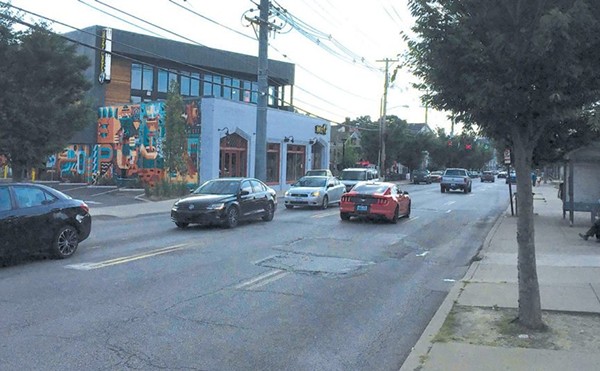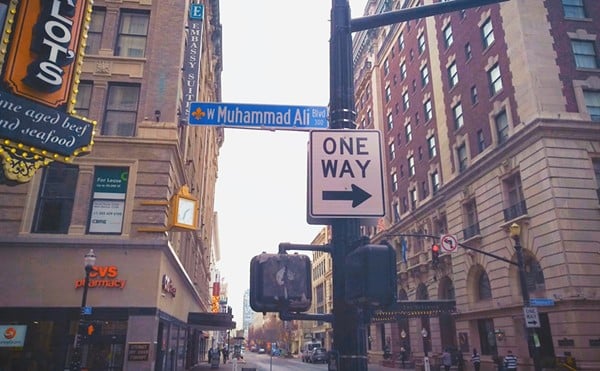
You’re also likely to see words like fuck, shit and piss, scrawled haphazardly across the more legitimate, striking work, the work that clearly took time to create. Damaged are pieces that, to many here, have helped validate graffiti as viable art.
The wall won’t be legal much longer, nor will it bear any “official” graffiti.
After myriad complaints from area businesses and graffiti artists about problems ranging from unlawful tagging outside the project’s boundaries to the kind of low-rent hack-scratch that would plant “Trust Jesus” over a carefully considered mural, the city is planning to decommission the wall six months ahead of schedule. Rather than see the project to its previously established end in October, the Mayor’s Committee on Public Art, or MCOPA, is considering alternatives to the graffiti wall, ones that might avoid the same set of unintended consequences.
“It’s no secret that people have abused the privilege,” said Chris Poynter, a spokesman for Mayor Abramson who was recently appointed to MCOPA. “It has now spilled beyond the art wall. It has spilled around the corner. We’ve heard some complaints from business owners that it’s spread onto businesses and so forth. That was never the intent of the project.”
The intent, of course, was to provide legit graffiti artists — both established and aspiring — with a public, legal canvass that would double as a rotating mural in an area of downtown quickly emerging as a cultural hub, with its high concentration of art galleries, restaurants and smallish local shops. Instead, to paraphrase several artists more than willing to discuss the problems in the hopes of solving them in a functional way, a few thickskulls are blowing it for everybody.
“If everyone had acted right and been respectful … I think this thing would have been beautiful,” Jeral Tidwell, who had the idea and convinced the city to embrace the project along with artist Sean Griffin, said in an interview Monday. “I think it’s really been incredibly disrespectful of the artists.”
“I agree the wall looks terrible,” said Ben McLeod, aka Mr. Mines, a graffiti artist for 12 years. “Every time I put anything up there of quality, it gets painted over.”
That would seem to violate one of the wall’s few tenets: to leave artwork up for two weeks. Other guidelines are just as elementary: gang signs, ads and vulgarity are out. But graffiti has always been a part of the underground, and some suspect that’s why the recess walls around the underpass are also tagged, as are the sides of various area businesses and, somewhat ironically, the sign outlining the rules of the wall.
“To me, graffiti art — it’s a clandestine sort of operation, and that’s part of its mystique,” said gallery owner Chuck Swanson, who supported the wall but was concerned this would happen. The fence around his building, a couple blocks away, has been tagged three times since the wall opened. “And the area is in the process of becoming more upscale, I suppose. At the same time, I guess they wanted to inject an edgier art element into it.”
Swanson is a member of the East Downtown Business Association, which he said has been open to the graffiti wall. With increased vandalism, though, that may be changing.
Metro Police, however, are not seeing an increase in incidents or arrests connected to the wall, according to Sgt. Eric Johnson, who’s in charge of detectives in the First Division, which includes East Downtown. If there has been an increase, Johnson said, people simply aren’t reporting all the incidents: The First Division has only received nine reports of graffiti in the past six months.
“I don’t think people that would use that wall are the same people that would probably be the ones out here vandalizing businesses and whatnot,” Johnson said Monday.
The wall will be painted a solid color soon, and MCOPA is currently soliciting opinions on what to do next. Cynthia Knapek, executive director of Brightside, the city beautification project that has been integral in the project, said there’s consensus that it will be another public gallery — perhaps something three-dimensional, perhaps artists representing various galleries. Tidwell said he’d like to keep the concept but move it to an area less susceptible to vandalism, like the new wall at Mellwood Arts Center.
One thing it won’t be is open to everybody, at least for a while.
“It always pays to take a little bit of a risk, to say let’s put it out there and see what happens,” Knapek said. “Right now I think we’re learning a few lessons.”





